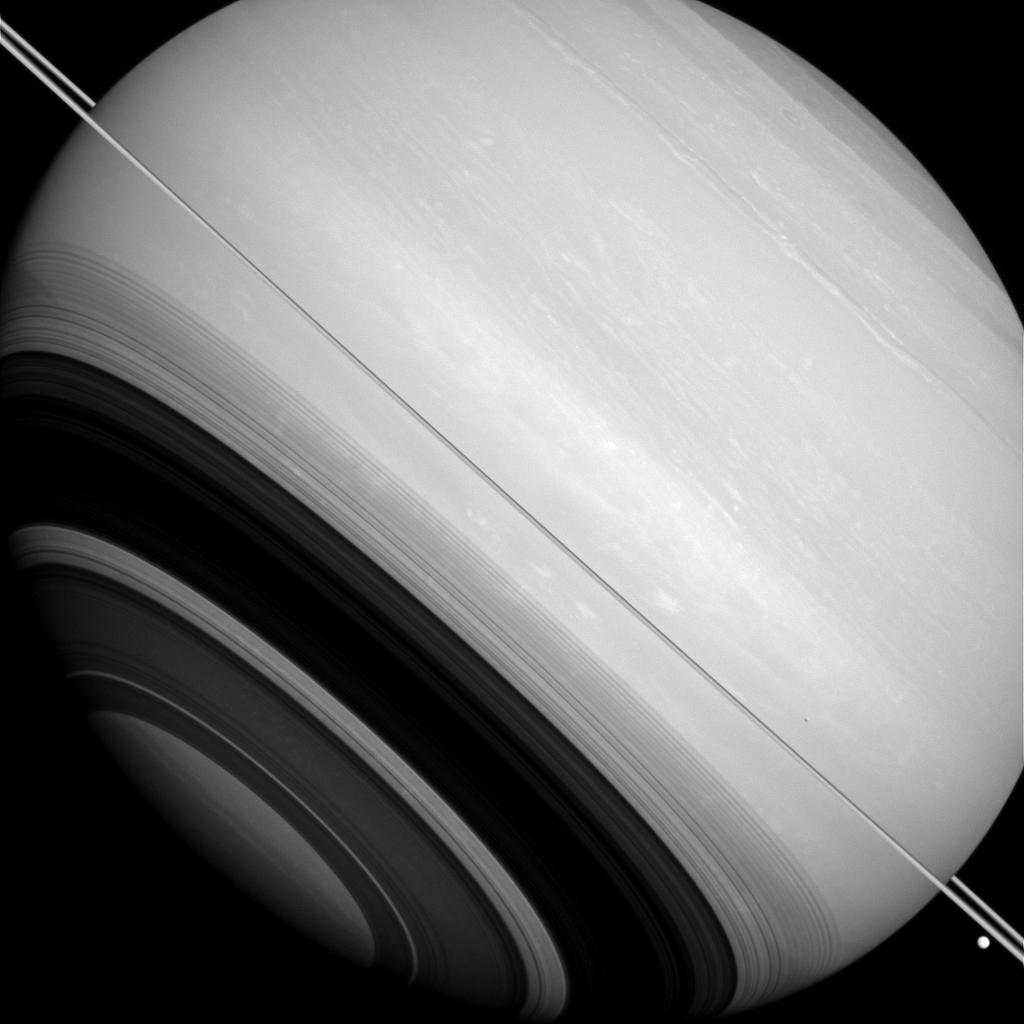Circling Saturn

| PIA Number | PIA18288 |
|---|---|
| Language |
|
Saturn is circled by its rings (seen nearly edge-on in this image), as well as by the moons Tethys (the large bright body near the lower right hand corner of this image) and Mimas (seen as a slight crescent against Saturn’s disk above the rings, at about 4 o’clock). The shadows of the rings, each ringlet delicately recorded across Saturn's face, also circle around Saturn's south pole.
Although the rings and larger moons of Saturn mostly orbit very near the planet's equatorial plane, this image shows that they do not all lie precisely in the orbital plane. Part of the reason that Mimas (246 miles, or 396 kilometers across) and Tethys (660 miles, or 1062 kilometers across) appear above and below the ring plane because their orbits are slightly inclined (about 1 to 1.5 degrees) relative to the rings.
This view looks toward the sunlit side of the rings from slightly above the ringplane. The image was taken in visible light with the Cassini spacecraft wide-angle camera on Aug. 14, 2014.
The view was obtained at a distance of approximately 1.1 million miles (1.7 million kilometers) from Saturn and at a Sun-Saturn-spacecraft, or phase, angle of 23 degrees. Image scale is 63 miles (102 kilometers) per pixel.
The Cassini-Huygens mission is a cooperative project of NASA, the European Space Agency and the Italian Space Agency. The Jet Propulsion Laboratory, a division of the California Institute of Technology in Pasadena, manages the mission for NASA's Science Mission Directorate, Washington, D.C. The Cassini orbiter and its two onboard cameras were designed, developed and assembled at JPL. The imaging operations center is based at the Space Science Institute in Boulder, Colo.
For more information about the Cassini-Huygens mission visit http://saturn.jpl.nasa.gov or http://www.nasa.gov/cassini . The Cassini imaging team homepage is at http://ciclops.org .
Credit: NASA/JPL-Caltech/Space Science Institute
